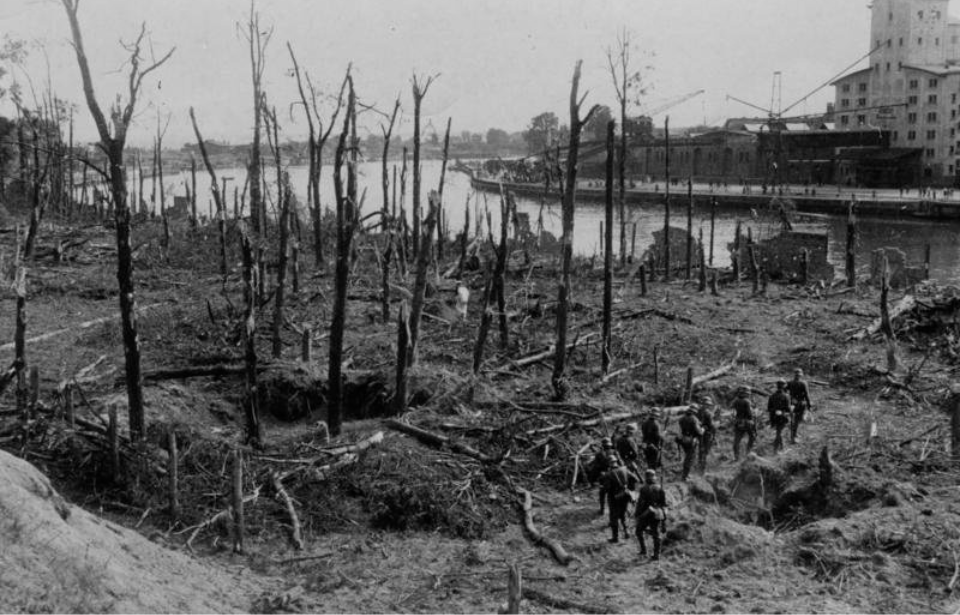In a tiny peninsula outside of the Free City of Danzig, ruins can still be found from the first battle of World War II. On September 1, 1939, the German battleship SMS Schleswig-Holstein fired on the Polish naval depot on the Westerplatte peninsula. The attack, known officially as the Battle of Westerplatte, marked the start of the Second World War.
Aftermath of the First World War
In the aftermath of the First World War, the Treaty of Versailles carved out Poland from the fallen empires of Germany and Russia. The Baltic port city of Danzig and its surroundings were taken from the former but remained separate from Poland. The Free City of Danzig was established under the protection of the newly-established League of Nations, and was primarily made up of German citizens.
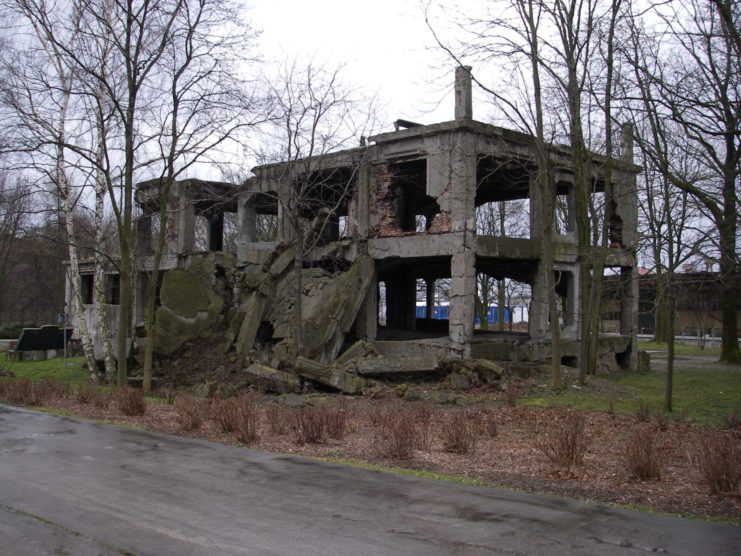
Under stipulations outlined in the Treaty of Versailles, Poland was allowed to station only 88 soldiers at an ammunition depot on the Westerplatte peninsula. The Polish government, however, recognized a German attack was imminent and attempted to warn their fellow Allied nations. Officials asked for reinforcements, but, due to the provisions outlined in the Treaty of Versailles, there wasn’t much that could be done.
Working against the Treaty of Versailles, the Polish government prepared for a potential assault, reinforcing existing fortifications in Danzig with machine guns, mortars and anti-tank weaponry while tripling the number of Polish soldiers stationed at them. By 1939, the number of servicemen operating in the city-state had gone from 88 to 210.
Demanding the annexation of the Free City of Danzig
When the Führer rose to power, he was determined to overturn the military and territorial provisions laid out in the Treaty of Versailles. In the spring of 1939, he demanded the annexation of the Free City of Danzig and extraterritorial rail access for across the Polish Corridor.
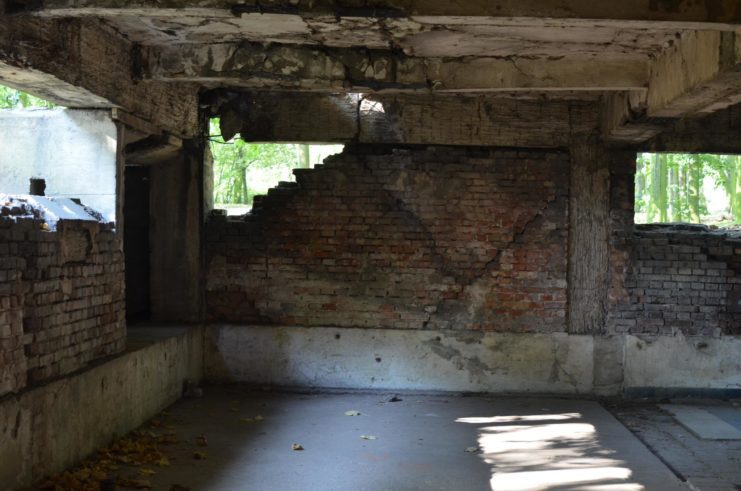
Tensions were growing. Ethnic Germans living in the Free City of Danzig supported the German regime, and by August 1939, the German Army had taken de facto control of the city-state. The small force of Polish soldiers along the Westerplatte peninsula was the only military presence in the region.
War comes to the Westerplatte peninsula
On September 1, 1939, mere minutes after the Luftwaffe dropped its bombs on Wieluń, the German battleship SMS Schleswig-Holstein open fired on the Free City of Danzig. The Germans thought the Polish military in Westerplatte would surrender easily, but that wasn’t the case.
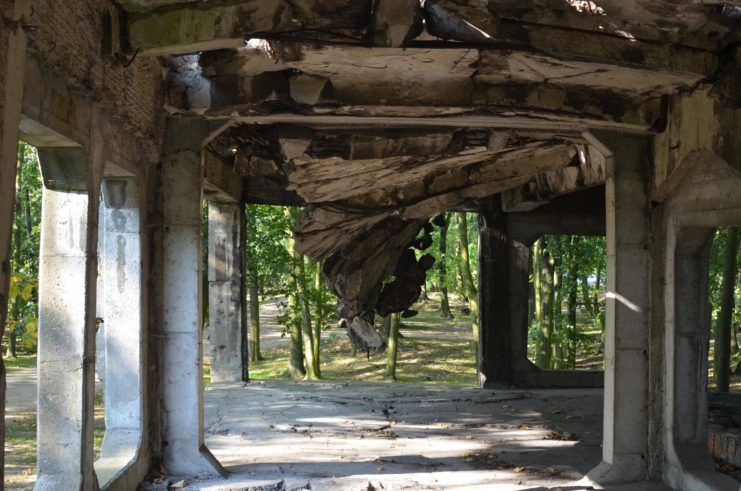
As the Germans broke into the city, they found themselves caught in the crossfire of the Polish machine guns at Westerplatte. The Polish military subsequently took out all of the German machine guns set up at various warehouses across the harbor channel to the south, before destroying one of the main structures. On this first day of battle, the Wehrmacht suffered heavy casualties.
Battle of Westerplatte
Over the coming days, the Germans repeatedly bombarded Westerplatte with naval artillery, field artillery and bombs dropped by the Luftwaffe. To everyone’s surprise, the Polish soldiers continued to hold off the over 570 German soldiers that attacked them over the course of the seven-day assault.

On September 3, 1939, England and France declared war on Germany. The Poles fighting along the Westerplatte peninsula were hopeful Allied reinforcements would come to help aid them in their fight. However, by September 8, it was becoming clear that no such reinforcements were coming.
By this time, the Germans occupied half of Poland and were quickly approaching Warsaw, the country’s capital. The garrison was running low on food, water and ammunition, and the injured needed to have their wounds properly cared for.
On September 8, 1939, Polish Maj. Henryk Sucharski surrendered to the invading. German Generalleutnant Friedrick-Georg Eberhart was so impressed by the efforts of the Polish forces that he allowed Sucharski to keep his sword while being taken as a prisoner of war (POW).
In the end, of the 3,400 Germans who took part in the Battle of Westerplatte, 300 died. In comparison, only 15 of the 201 Polish soldiers lost their lives.
Post-war memorialization of the Battle of Westerplatte
The importance of the Battle of Westerplatte and the bravery of the Polish servicemen who fought in the engagement cannot be understated. Despite the German invasion of the country, the soldiers’ actions inspired over Polish forces to keep on fighting, with Polish Radio repeatedly broadcasting the phrase, “Westerplatte broni się jeszcze,” which translates to “Westerplatte fights on.”
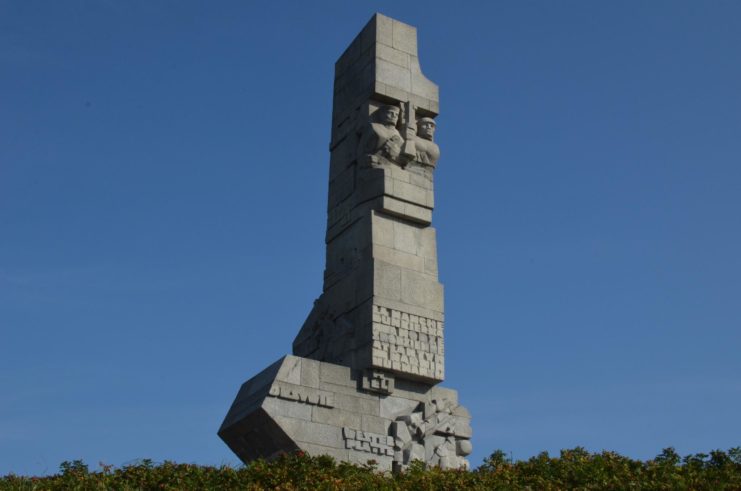
More from us: Operation Bodenplatte: The New Year’s Day ‘Hangover Raid’ That Devastated the Luftwaffe
Want to become a trivia master? Sign up for our Today In History newsletter!
The ruins of the defenders’ barracks and guardhouses along the Westerplatte peninsula can still be seen and visited today, with them having become a popular attraction for war and military enthusiasts. In 1966, the Westerplatte Monument – also known as the Monument of the Coast Defenders – was unveiled in Gdańsk, Poland, and continues to stand as a reminder of the bravery of the country’s servicemen.
